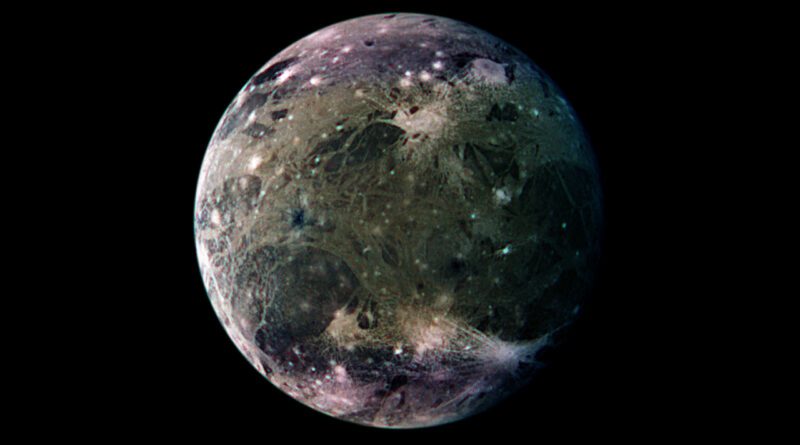Water Vapour on Ganymede – Jupiter’s Moon
[Please note that this page contains affiliate links. If you choose to purchase after clicking a link, I may receive a commission at no extra cost to you.]
A team of astronomers recently detected water vapour evidence in the atmosphere of Jupiter’s moon Ganymede. The discovery may help search for habitable exoplanets.
Ganymede is the biggest moon found in the solar system — it is even more significant than the planet Mercury — and astronomers think it may have more water than all of the oceans on earth combined.
Finding liquid water somewhere in the universe is the main objective in searching for extraterrestrial life. The likely possibility of all that water has made Ganymede a central topic of interest for researchers.
Although, because of the cold moon, all they have been able to find is ice — if there is liquid water somewhere on the moon, it is probably buried 100 miles into the moon.
Ganymede’s Water Vapour
Looking at data gathered by the Hubble telescope from over the past two twenty years, astronomers have now found evidence of water vapour in the atmosphere of Ganymede.
Astronomers also think they know how they got there. The point that would be noon on Ganymede, near the surface of its equator, gets warm enough for some of the ice to change directly to a gas, skipping over the liquid stage.
This is known as “sublimation,” before this happened, we had never seen sunlight-triggered sublimation on any moon found in our outer solar system.
Ganymede’s Atmosphere
Finding water vapour on Ganymede’s atmosphere will do more than change what researchers know about the moo. It affects the understanding of Jupiter’s system in the universe.
NASA wrote, “Knowing the Jovian system and looking at its history, from the origin to the likely emergence of livable environments, will aid us with a better understanding of how gas giant planets and the satellites evolve and form.”
On the other hand, understanding this may help astronomers assess the likely habitability of any Jupiter-like exoplanets that might be found.
Ganymede’s Future
The researchers hope the finding of Ganymede’s water vapour will help enlighten the ESA’s upcoming JUICE (Jupiter Icy moons Explorer) mission, which will launch in 2022.
Once the space shuttle reaches Jupiter in 2029, it will spend three years studying the planet, including three of Jupiter’s moons, Ganymede.


